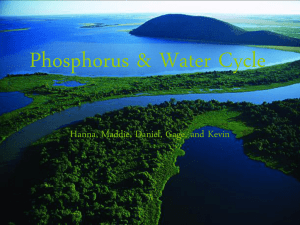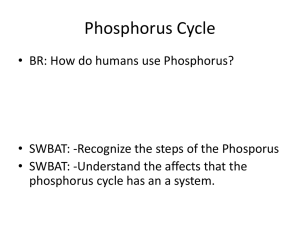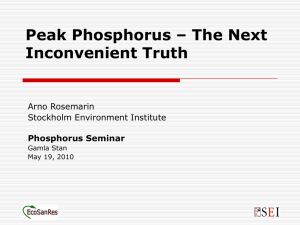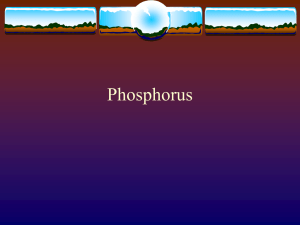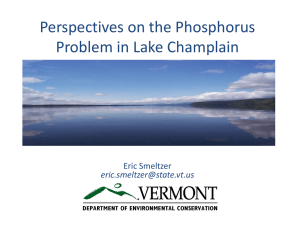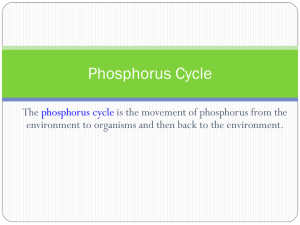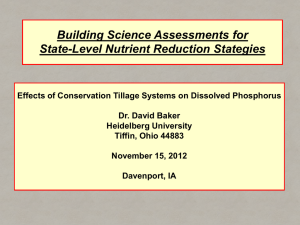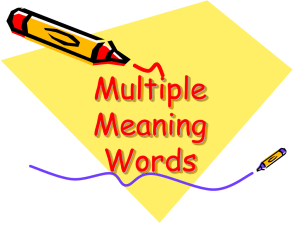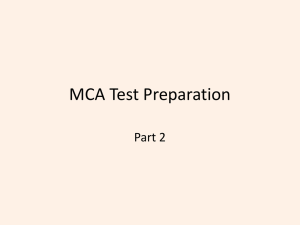Bow River Phosphorus Management Plan: An Overview
advertisement
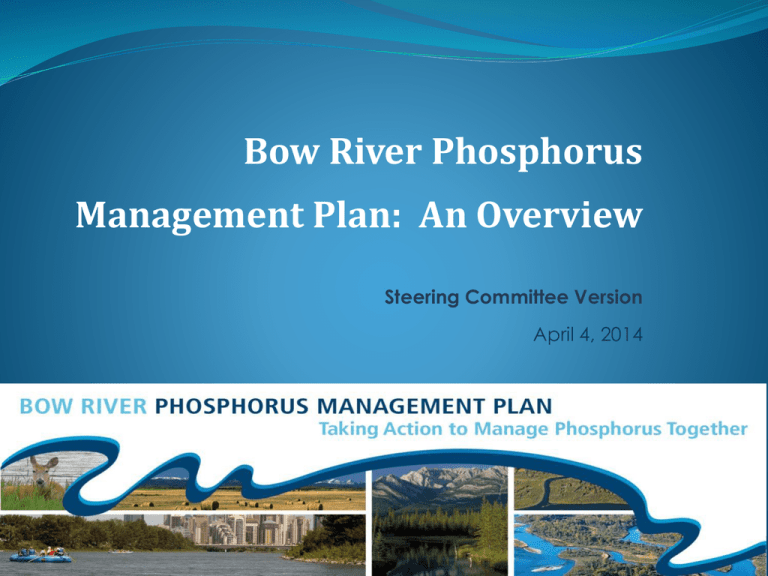
Bow River Phosphorus Management Plan: An Overview Steering Committee Version April 4, 2014 The Bow River Phosphorus Management Plan Why here and why now? Multiple uses in the Bow River basin Heightened nutrient levels in the Bow River downstream of Calgary Anticipated growth in population and development Heavily populated reach Potential for cumulative impact to result in increased phosphorus Excessive growth of aquatic plants and algae 1.1 A Strategic Plan The Bow River Phosphorus Management Plan is a strategic plan for phosphorus management: Envisages a desired future for water quality and provides key direction for attaining desired future conditions. Answers the question: what are our objectives and how will we achieve them? Offers a vision and broadly maps out how it will be attained through a set of strategies and actions. 1.2 An Adaptive Plan The BRPMP is an Adaptive Plan • The plan is a living document that is evaluated and adjusted as information about the success of the implementation of strategies is determined. • Adaptive management is a formal process for continually improving management practices by learning from their outcomes (Taylor, et al. 1997) The Adaptive Management Cycle 1.3 Comprehensive Approach Needed The BRPMP is an opportunity to coordinate both point and nonpoint source efforts so that phosphorus loadings can be managed effectively and efficiently using a regional and cumulative approach. To ensure phosphorus is managed at acceptable levels, new and existing plans that address growth should consider the recommendations in the Bow River PMP. 1.4 Endorsing and Enrolling in the BRPMP Endorsement demonstrates that each organization supports the BRPMP in principle, and demonstrates a willingness to work towards the implementation of those strategies and actions relevant to their sector. Your constituency is welcome to comment on any part of the P Plan in the Endorsement section. 2. THE ISSUE: Planning Area 2. THE ISSUE: Phosphorus Loading 2. THE ISSUE: Growth Why this work is important Phosphorus levels in the Bow River have long been a concern What happens when we add expected population growth over the next 30 years? Urban development Agriculture intensification Increased food production Activity on the land Landscape modifications Increased wastewater We can act now to prevent problems later 3. APPROACHES TO PLANNING 3.1 3.2 3.3 Water for Life Land Use Framework and Alberta Land Stewardship Act The Bow River Phosphorus Management Plan 3.4 Principles, Outcome and Objectives of the BRPMP: Outcome: “Phosphorus inputs to the Bow River are managed to provide a healthy aquatic ecosystem while meeting the needs of those who rely on clean water.” 3.4 Principles, Outcome and Objectives of the BRPMP: “The objective of the Bow River Phosphorus Management Plan is to help manage current water quality conditions in the Bow River through control of phosphorus inputs.” 4. Water Quality Context 4.1 Sources of Phosphorus 4. Water Quality Context 4.2 Effects of Excess Phosphorus 4. Water Quality Context 4.3 Current Water Quality Conditions 5. Outcomes and Strategies Objectives and Strategies Improve understanding and change behavior to reduce phosphorus entering the Bow River. 1.0 Provide accessible public education programs to all jurisdictions 19 5. Outcomes and Strategies Objectives and Strategies Increase knowledge about phosphorus sources, the planning area, and phosphorus management practices. 2.0 3.0 4.0 5.0 6.0 7.0 Explore opportunities to address the cumulative effects of phosphorus in the long term. Monitor and evaluate water quality conditions in the Bow River basin to establish a baseline and investigate risk to the aquatic environment and potential management actions if phosphorus levels trend upward. Complete accurate inventory of landscape mapping to determine risk and establish baseline conditions. Conduct research and fill data gaps to advance knowledge in phosphorus management and mitigation options. Use models to anticipate new phosphorus loadings as growth occurs in the planning area, and to test current and future scenarios. Evaluate and align policies. 20 Objectives and Strategies 5. Outcomes and Strategies Reduce Additions of Phosphorus 8.0 9.0 Facilitate the adoption of livestock manure nutrient best management practices to reduce phosphorus build up and runoff loss potential. Reduce urban additions of phosphorus. 21 5. Outcomes and Strategies Reduce the movement of phosphorus to the river. 10.0 11.0 12.0 13.0 14.0 Achieve the goal of no further net loss of wetlands in the planning area. Work toward achieving wetland restoration objectives for the planning area. Maintain and improve riparian area function. Reduce sediment loading from regional drainage and return flow channels. Minimize erosion and control sediment movement. 22 5. Outcomes and Strategies Objectives and Strategies Remove excess phosphorus from water before it reaches the river. 15.0 16.0 17.0 18.0 19.0 Reduce amount of phosphorus per capita entering the Bow River PMP planning area. Establish regional watershed targets. Maximize the effectiveness of Wastewater Treatment Plants to reduce outputs of phosphorus. Review lagoon Code of Practice and regulations to allow for maximum phosphorus removal. Ensure quality assurance of current practices for lagoon operations. 23 6. Implementation 6.1 Establishing an Implementation Committee Next Steps: 1. Build on the knowledge of the Steering Committee and Task Teams 2. Encourage contributing parties to commit to implementation of strategies and actions relevant to their sector 3. Strike an Implementation Committee with a balance of interests 4. Develop an implementation plan and road map to move the BRPMP forward 5. Identify opportunities for pilot technologies to be explored 6. Explore and secure new sources of funding 7. Establish an education and awareness working group 7. Evaluation, Adjusting and Reporting What does successful implementation look like? A successful plan is one that gets implemented, is evaluated and is then adjusted based on new information. Overall, the BRPMP will be successful if: Excessive phosphorus does not accumulate in the Bow River; Water quality is maintained or improved; A healthy aquatic ecosystem is maintained by the control of aquatic plants; Beneficial and best management practices are being used; and Stakeholders are working together to manage phosphorus loading to the Bow River. 7. Evaluation, Adjusting & Reporting Outcomes, Objectives and Strategies Condition Pressure Response Indicators Indicators Indicators Can be referred to as “state of” or “ambient” indicators; these measure quality and quantity parameters, e.g., phosphorus concentration in a river, dissolved oxygen levels in a river. Can be referred to as “stressor” or “influence” indicators; these measure inputs to and outputs from the environment, e.g., water withdrawals from a river, wastewater effluent into a river. Actions taken to influence the pressure and condition indicators, e.g., the number of landowners implementing phosphorus reduction best management practices within the study area. Performance Measurement 26 8. Endorsements and Contributing Parties’ Relationship to BRPMP Refer to Executive Summary and pull-out signature page

